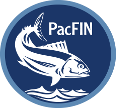As of noon on November 26th, IFQ fishers will be prohibited from using midwater trawl gear shoreward of the 150 fathom line. Link
As of November 24th, 2.5 mt of the 43.3 mt allocation of canary rockfish remain available to shorebased IFQ fishers. Fishers are asked to avoid canary rockfish while management options are being reviewed. Link
Due to concerns about domoic acid, Washington is delaying the start of the commercial Dungeness crab season along the southern portion of its coast. Recent testing on the crabs have indicated they are safe to eat, but due to unsafe levels of domoic acid found in crabs in California and Oregon additional tests are being conducted along the southern Washington coast. Link
The National Marine Fisheries Service published the final rule for the Seabird Avoidance Program on November 18th. The rule will be effective starting December 18, 2015. Link
The start of the commercial Dungeness crab season has been delayed and the commercial rock crab season has been closed in California from Santa Barbara north to the Oregon border due to high level of the neurotoxin domoic acid in crab. The California Department of Fish and Wildlife will work with the California Department of Public Health and Office of Environmental Health Hazard Assessment to continue to sample crab to determine when it is safe to reopen the fishery. Link
News, advisories, and closure information will be posted at the following site. Link
